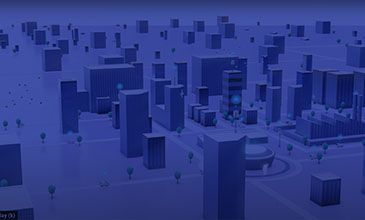What is the Difference Between 5G and Other Generations of Network?
- Published
- 4 min reading
Each emerging new generation of telecommunications network poses new challenges for users and companies from the telco industry. In order to be able to use the functions offered, you need to know their exact operation.
5G technology is focused on supporting three broad categories of applications to enable unprecedented use cases: eMBB (Enhanced Mobile Broadband), mMTC (Massive Machine-Type Communication), and URLLC (Ultra-Reliable Low-Latency Communication). 5G SBA architecture is much more distributed than previous generations of wireless. What is 5G, and how does it work?
What is the difference between 2G, 3G, 4G and 5G networks?
As the next generation of wireless technology, 5G differs significantly from previous generations. While earlier networks were designed to connect people to people and the Internet, 5G technology is expanding the range of entities that communicate even more widely. It connects things with people, the Internet, and other things. Many observations suggest that it was created primarily for the communication between machines and machines, and for data analysis and storage systems. The parameters assumed in next-generation networks significantly exceed the needs and even the perceptive abilities of humans. In this respect, the previous technologies have already worked well, and the problem was rather the popularization of their high-end parameters – not to mention the issue of data transmission speed.
5G technology addresses an extended set of industries and other human activities that require greater network flexibility to meet a wider range of requirements for latency, cell density, radio frequency spectrum, and data rates.
More than communication systems: the role of MEC in 5G networks
These requirements, to some extent resulting from the nature of this technology, allow the construction of much more precise services dedicated to individual customer groups, and even individual customers. The technology implementing the emerging requirements of the industry also fueled visions of the development of the industry itself. Telco technology is not only about communication systems, but also vertical solutions, which, thanks to their flexibility, meet different, sometimes contradictory requirements of different domains. Accordingly, networks are evolving to primarily leverage software-defined networks (SDN), network function virtualization (NFV), and distributed architectures native to the analytical cloud and data storage cloud to enable disaggregation and virtualization of core functions. This separates the control plane and the user plane, and introduces capabilities such as network partitioning and mobile edge processing (MEC). 5G is also moving to a service-based architecture (SBA) that moves from a request-response communication method to a producer-to-consumer model.
Comarch has been connecting the world of telecommunications and computer techniques since its inception. Never before have these been so close to each other or complemented each other with interpenetrating technologies. Our existing solutions prove the benefits resulting from a holistic approach to the issue of technology convergence. From our numerous solutions in the fields of OSS, BSS, IoT, it is possible to build solutions for many verticals today by combining standard functional elements of tools supporting the maintenance of even the most complex technologies. It’s almost as simple as children’s building blocks.








